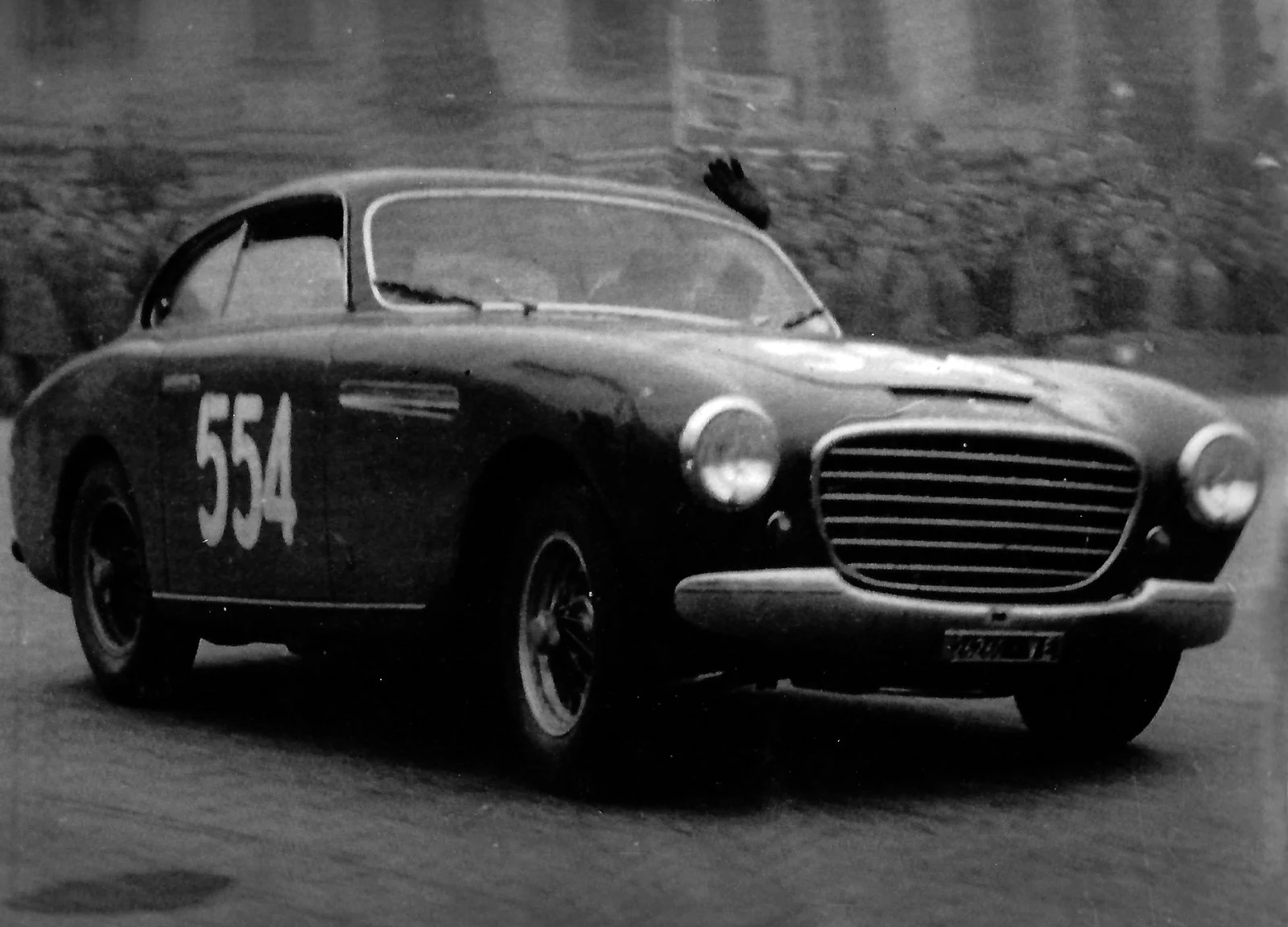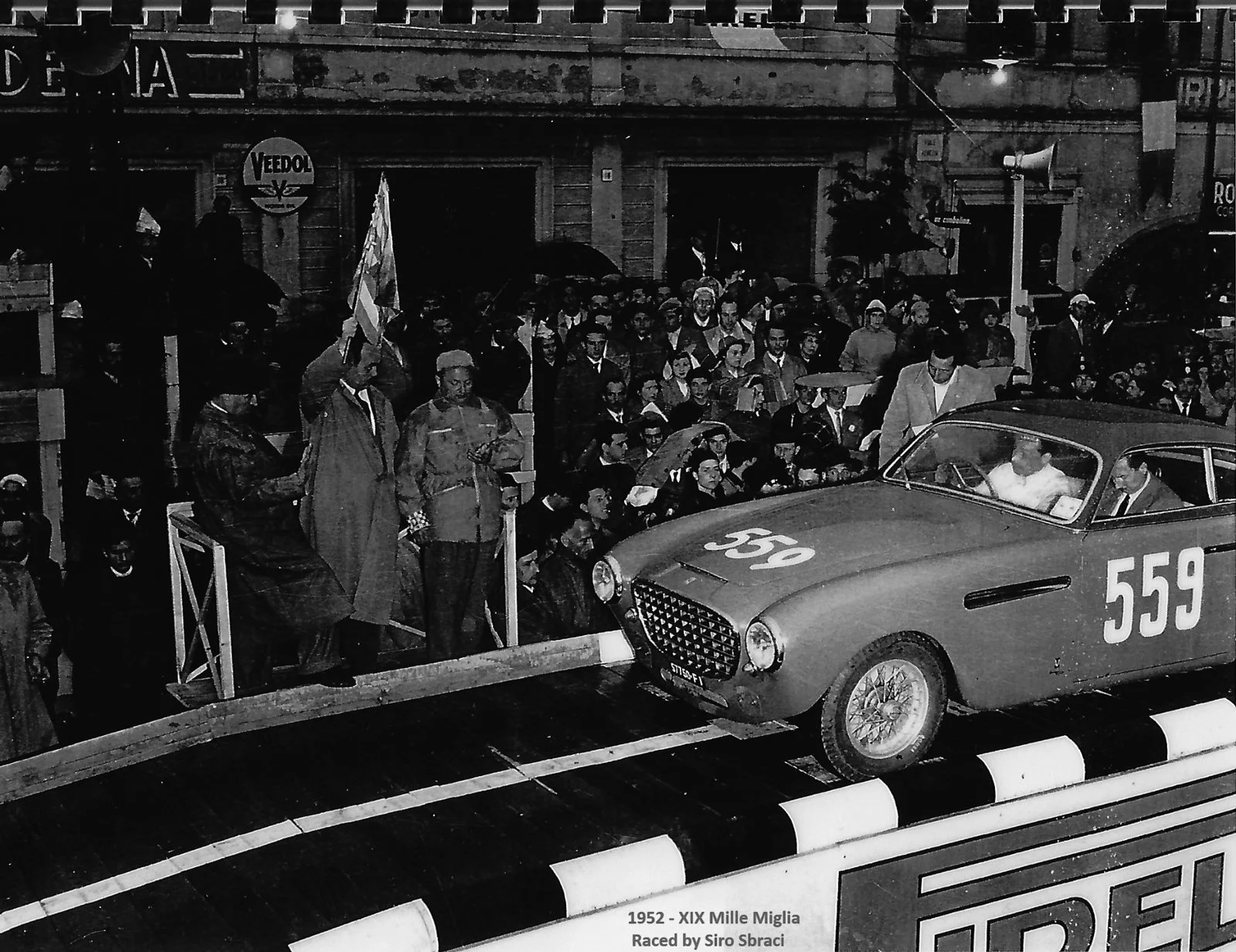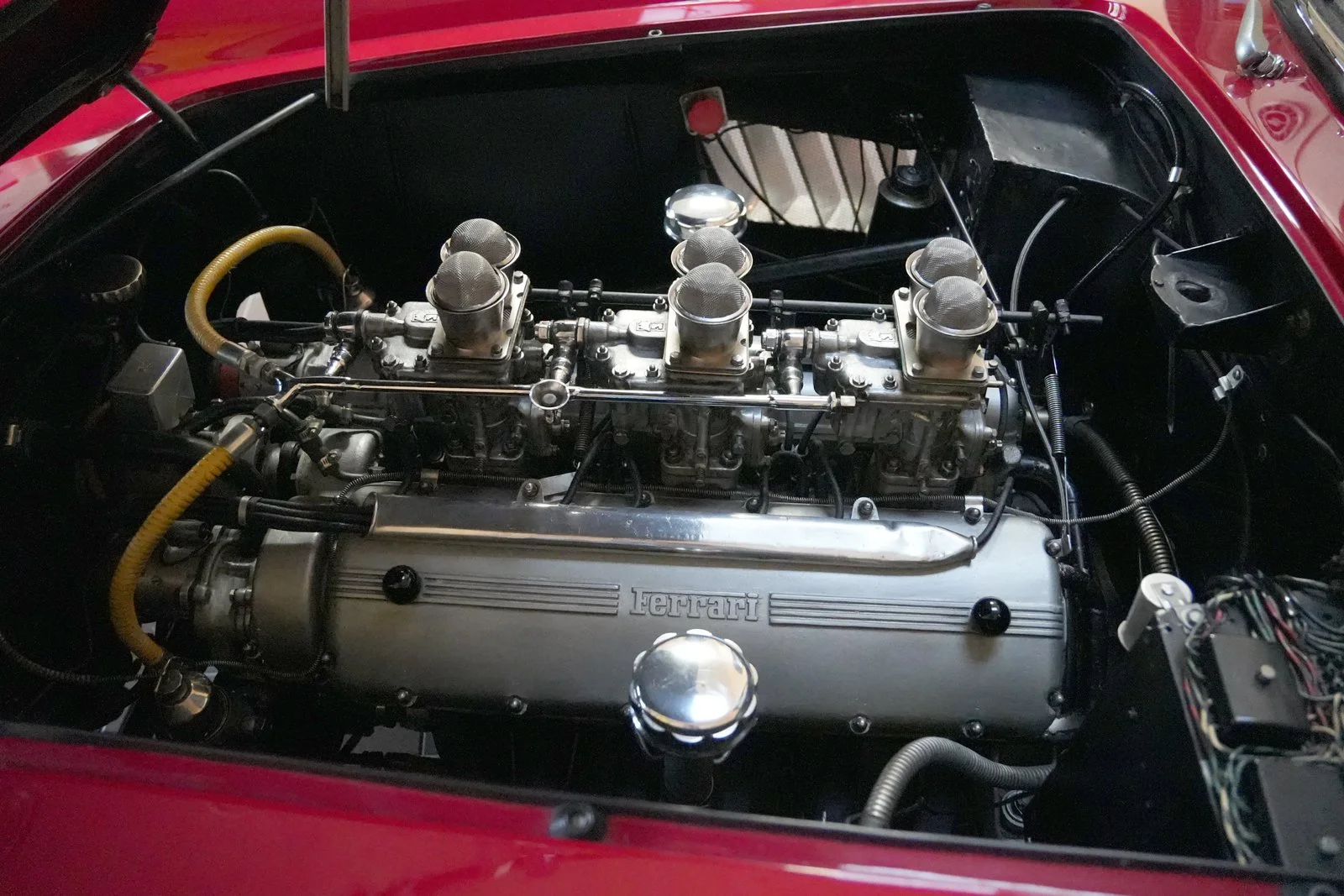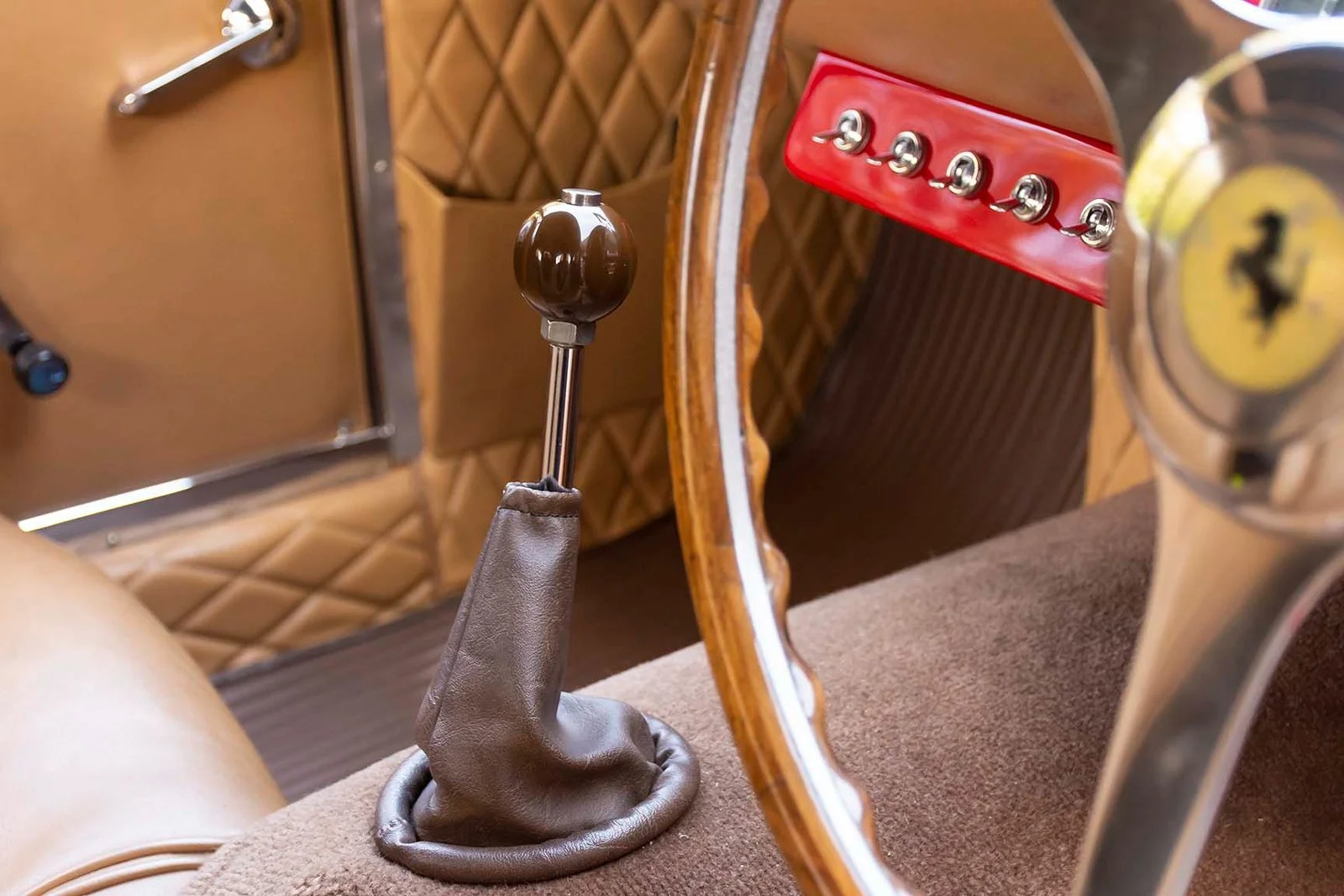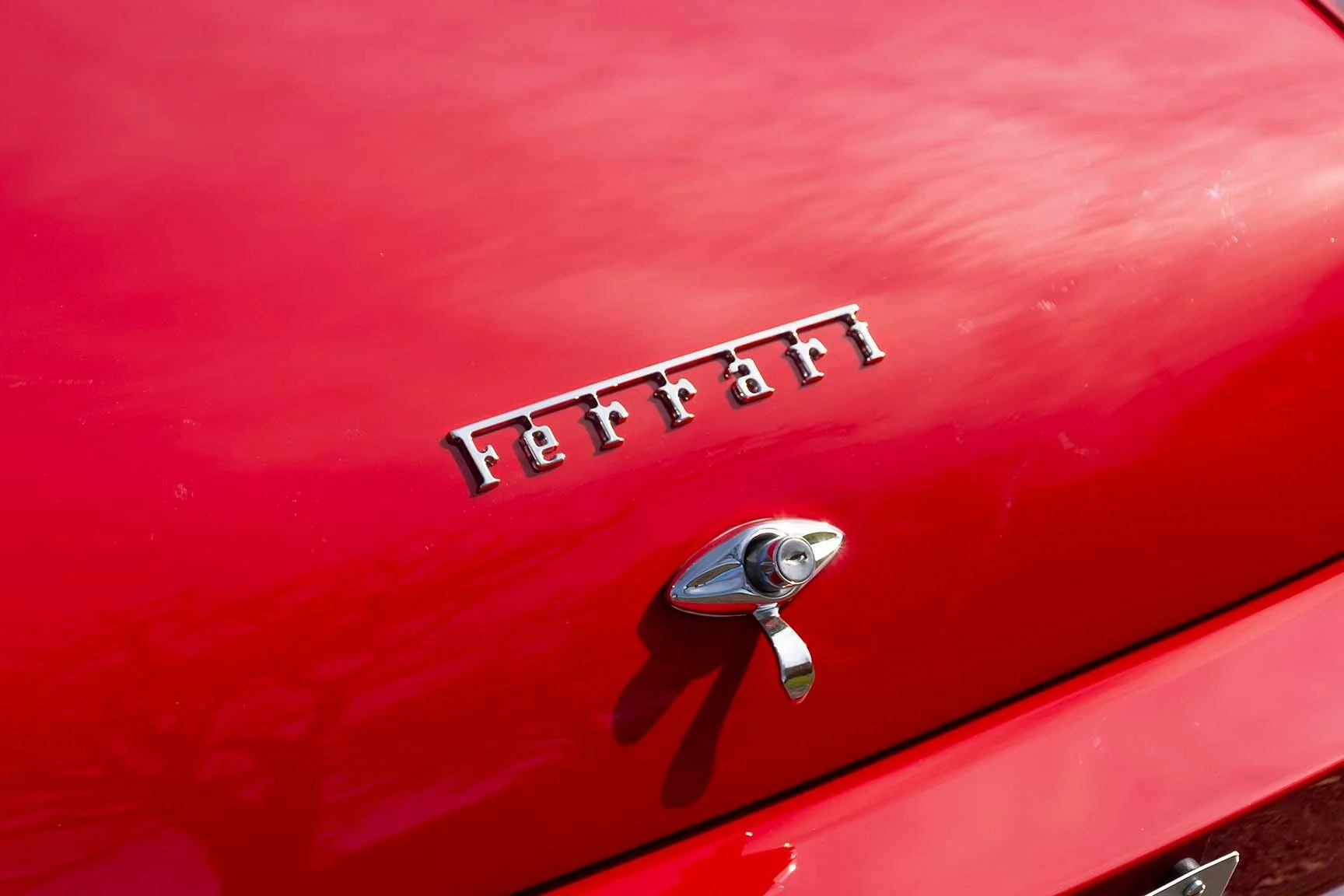1951 Ferrari 212 Inter Vignale/Drogo Spyder
On loan courtesy of Nick Soprano / Motor Classic & Competition
The 1951 212 Inter is a true reflection of Enzo Ferrari’s need to sell road cars in order to fund his passion for racing. Machines such as this one were racecars thinly disguised as typical road worthy vehicles. The British magazine Autocar noted that the 212 Inter outperformed any car they had previously tested. Two Inters were entered in the 1951 Carrera Panamericana in Mexico where they finished 1st and 2nd.
This example has an unusually fascinating history. The chassis was completed in 1951 and bodied by the noted Ferrari coachbuilder, Alfredo Vignale, as a coupe. It was sold to its first owner, Siro Sbraci in March 1952 and entered in the 1952 Mille Miglia, driven by Sbraci and Giudeci with race number 559. Later that year, it raced in the Tuscany Cup finishing 1st in class and was featured in the Ferrari Yearbook of 1953. It was sold in 1954 and again entered in the Mille Miglia with race number 554 driven by Gino Casarotto and Stelio Conconcelli –then hill climbed at Copa d’Oro dei Dolomiti. Circa 1961 the Vignale coupe was rebodied by Carrozzeria Drogo into an alloy California Spyder style body that you see today. It should be noted that Pierro Drogo was a Ferrari sub-contractor that subsequently built many iconic racing bodies for Scuderia Ferrari including the World Championship prototypes Dino 206S and Ferrari 330 P4, who many consider the most beautiful sports racing Ferraris ever built. Subsequent to this rebody, the next owner was Count Giovanni Lurani, an accomplished automobile engineer, racecar driver and journalist. Count Lurani was in his own right a three time class winner at the Mille Miglia as well as a class winner at LeMans.
The 212 Inter featured a silicon-aluminum 60 degree V-12 engine designed by Giaocchino Colombo and wasfirst seen in 1947 as a Formula 1 racing engine. This engine layout proved to be incredibly flexible and would be continuously modified to produce ever greater output. It would be used by Ferrari S.p.A until 1988. The driveline also had a 5-speed gear box; a highly innovative feature in 1951 when most cars had 3 or possibly 4 forward gears. The 5-speed manual transmission would not become common for another 2 decades. The 212 Inter also featured a double wishbone suspension. The design innovation was a way to better manage the dynamic characteristics and load-handling of wheel travel; especially at high speeds.
Only 82 examples were built over the 2 year production run.
Important Dates in the Inter’s Timeline
1952 Mille Miglia
1953 Tuscany Cup
1953 Siro Baci of Florence had a competition 3-Carb installed by Garage La Rotunda, the Ferrari dealer in Florence. The three carb set up increasing horsepower from 150 to 170 at 6500 rpm.
1954 Mille Miglia
1961 Vignale Coupe was re-bodeid by Piero Drago into an alloy California style Spyder. Piero Drogo was well known for custom bodywork as well as the builder of the Dino 206SP and the iconic Ferrari 330/P4.
This fabulous car is for sale with Motor Classic & Competition.

